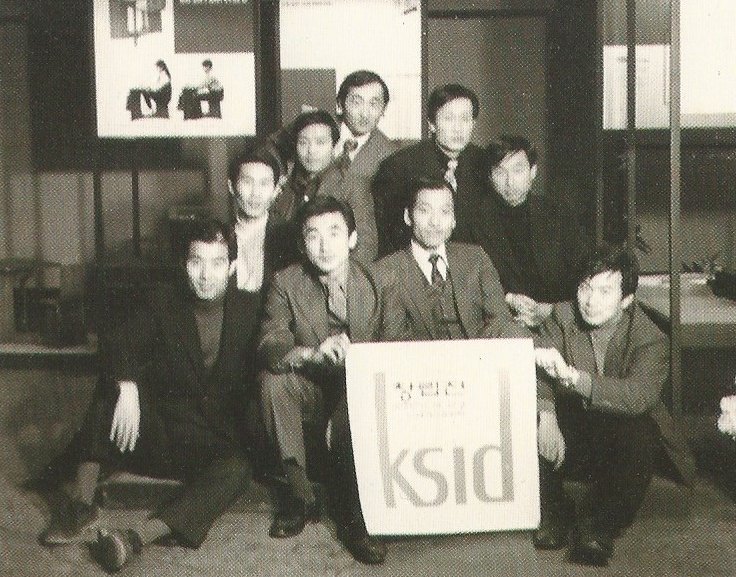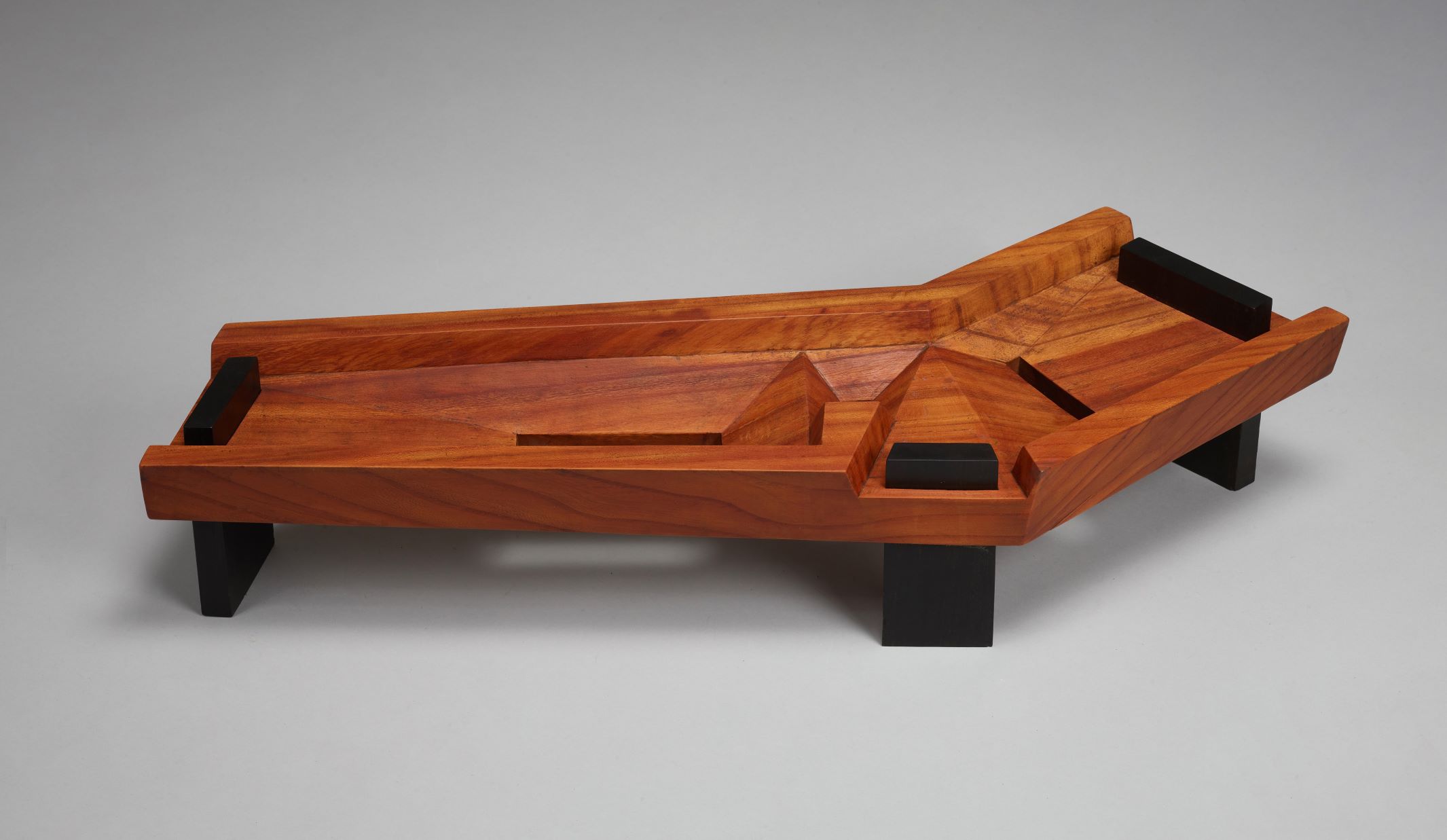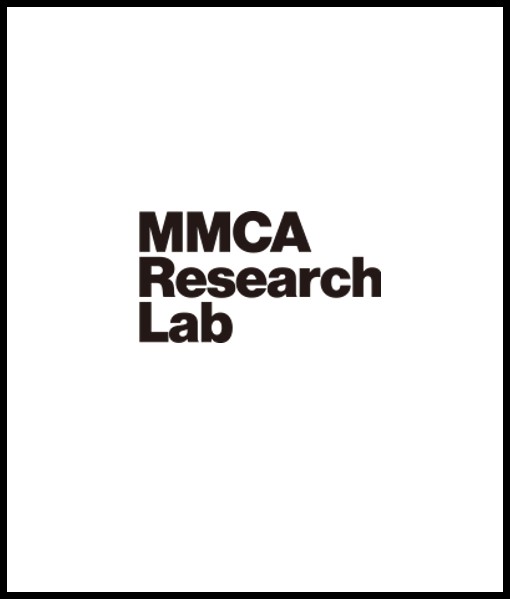
Korea Designer’s Council
* Source: MMCA
Related
-

Korea Association of Industrial Designers
The Korea Association of Industrial Designers (Hanguk saneop dijaineo hyeophoe, KAID) is a private association and corporation founded in 1993 with the merger of three organizations involved in industrial design. These three organizations are the Korea Industrial Designers Association (INDDA) affiliated with the Korea Designer’s Council (Hanguk dijaineo hyeopuihoe, KDC) founded in May 1972 at the initiative of Park Daesun, a leading design educator; the Korean Industrial Designers Association (the Korean Society of Industrial Designers (KSID) at the time of its founding) established in June 1972 by Min Chulhong and eight other designers (Lee Sunhyeok, Bu Sueon, Kim Gilhong, An Jongmun, Bae Cheonbeom, Choe Daeseok, Kim Cheolsu, and Min Gyeongu); and the Korean Industrial Design Company Association (KIDCA) founded in 1991. They were merged in August 1993 and launched as the Korea Association of Industrial Designers (KAID). After the merger, An Jongmun became the interim president, and at the board meeting held in April 1994, Bu Sueon was elected as the first president. Shortly after its launch in 1993, the KAID joined the International Council of Societies of Industrial Designers (ICSID, currently World Design Organization, WDO). In 2001, it co-hosted the ICSID 2001 Seoul Congress with the Korea Institute of Design Promotion. In 1997, the KAID established the Korea Industrial Design Award and renamed it as the Pinup Design Award in 2008. In 1999, it formed the Asia Designers Assembly (ADA) together with the Japan Industrial Designer Association (JIDA) and the China Industrial Design Association (CIAD). The assembly continues to this day. In 2011, it launched the Korea Society of Industrial Design (KSID) in order to bridge the gap between the field and academia in the design world.
-

Korean Craftmen's Council
There are two organizations that were formed in the 1960s and 1970s under the same name Korean Craftsmen’s Council (KCC). The first KCC was established on July 17, 1965 by fifteen craftsmen, including the chief secretary Park Daisoon, the assistant administrator Nam Sang-gyo, and Lee Shinja, Yi U-seong, and Chung Kyu. Based on the academic research on craft activities, it strove to enlighten people about crafts, study craft education, develop industrial planning and product management of contemporary crafts, and promote international exchanges of craftworks. Its crafts exhibition was held annually, with the first one held at the Korean Information Service Gallery from July 20 through 26 in 1965. The first KCC led the “Good Design” movement. According to the newspaper article in Dong-A Ilbo on March 12, 1966, it was admitted to the World Crafts Council (WCC) as a full member in 1966, the year after its founding. The second KCC was founded on July 10, 1973 by craftsmen in their thirties, such as Kang Chankyun, Kwak Daeung, Kim Tuk-kyum, Kim Jihee, Park Hyungchul, Yim Mugeun, Cho Chunghyun, Choi Seungchun, and Choi Hyunchil. It aimed to fulfill “its responsibility as designers to rationalize and beautify modern living spaces.” From September 17 through 23 in 1974, the exhibition celebrating its founding was held at the Shinsegae Gallery. Starting in 1980, it had four divisions of metal crafts, ceramics, wood-lacquering crafts, and dyeing crafts. It began to use the new name Korean Crafts Council from the late 1980s, continuing until today. The number of its divisions has also increased to five (metal crafts, ceramics, wood-lacquering crafts, textile crafts, and glass crafts).
Find More
-

Min Chulhong
Min Chulhong(1933-2020) is a pioneering industrial designer and educator who has engaged in both education and artistic practice based on contemporary design concepts. Soon after graduating from the Applied Arts Department at the College of Fine Arts of Seoul National University in 1958, Min was selected for the Design Faculty Overseas Study Program organized by the Korea Handcraft Demonstration Center (KHDC) and studied for a year at the Illinois Institute of Technology in the U.S. as a special student. After his return to Korea in 1959, he served as head designer at the KHDC and taught in the Applied Arts Department at the College of Fine Arts of Seoul National University. In 1963, he was appointed as a full-time lecturer at the same university, and there he worked as a professor until his retirement in 1998. In June 1972, he founded the Korea Society of Industrial Designers (KSID, later absorbed and integrated into the Korea Association of Industrial Designers (KAID)) together with eight other designers. They are Lee Sunhyeok, Bu Su-eon, Kim Gilhong, An Jong-mun, Bae Cheon-beom, Choi Daeseok, Kim Cheol-su, and Min Gyeong-u. The oldest of the nine founding members, Min Chulhong led the establishment of the KSID and served as its first and second president. In 1983, he founded Min Industrial Design Associates, which provided design services for government agencies and business entities. The institute undertook a wide range of service projects, including industrial machines and robots, transportation devices, environmental sculptures, and corporate identity programs (CIP). Occasionally, Kim Jinpyeong, Kwon Yeonggeol, Kim Gyeongbae, Kim Hyeonjung, Mun Gijong, Jang Hoik, Jeong Gyeongwon, Ko Ildu, Hong Seokgi, and others participated in these projects as part-time designers. In the same year, Min became a design advisor to Daewoo Electronics. In 1986, he was appointed as a design committee member for the Seoul Olympic Games and designed a sculpture engraved with the names of Olympic winners and a documentary monument Wall of Glory (1989). In 1994, the Min Chol Hong Retrospective exhibition was held at the MMCA. It was the first solo exhibition of an industrial designer since the museum opened. Min received the Silver Tower Order at the Korea Design Award in 2005, and in 2013 he was inducted into the Designer Hall of Fame by the Korea Institute of Design Promotion.
-

Korean Craft Design Institute
The Korean Craft Design Institute [Hanguk gongye dijain yeonguso] was established on July 26, 1966 to improve design, conduct research on production technology, train technicians in the craft field and promote exports of the craft industry through provision of crafts. It began with the need for a design center that professors led by Lee Soonsuk from the College of Fine Arts at Seoul National University mentioned to the government in the mid-1960s. Accordingly, the institute was founded within the precincts of Seoul National University (currently the International Design School for Advanced Studies at Hongik University in Yeongeon-dong, Jongro-gu, Seoul) with support from the Ministry of Commerce and Industry. The first chairman was Park Gapseong, and the director was Lee Soonsuk. Practical tasks began to be undertaken in 1968, covering the fields of wood-lacquering crafts, ceramics, goldsmithing, weaving, dyeing, industrial art, and commercial art. The Korean Craft Design Institute was the first design promotion organization in South Korea, with the exception of the Korean Handicraft Demonstration Center [Hanguk gongye sibeomso] run by Americans in the 1950s. It was part of the College of Fine Arts of the Seoul National University. However, in actuality, it received interference from the Ministry of Commerce and Industry and was renamed the Korean Export Design Center in 1969. There was a discrepancy between the management team that aimed for a research-oriented institution and the Ministry of Commerce and Industry that sought to make it an export promotion institution. This discrepancy led to its merging with the Korean Packaging Technology Association in 1970. As it was renamed the Korean Design Packaging Center (present-day Korea Institute of Design Promotion), it came to belong to the state.






